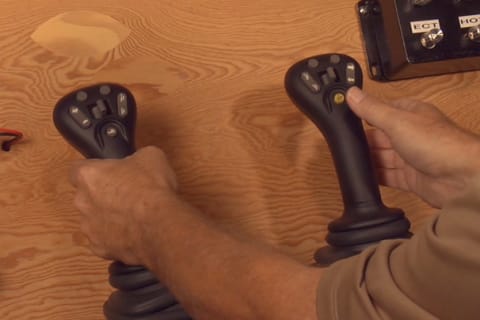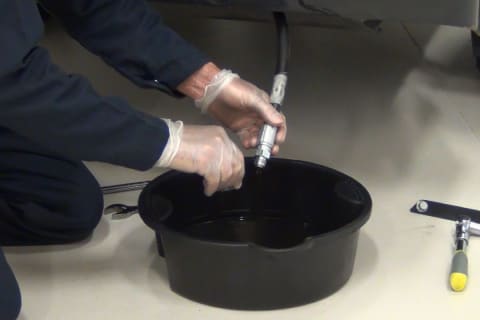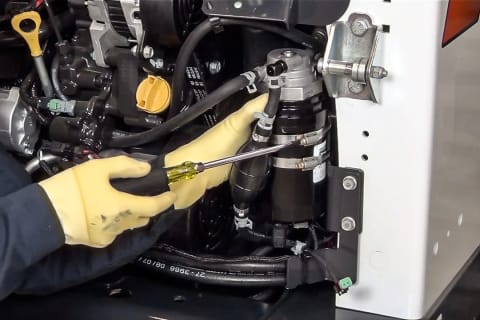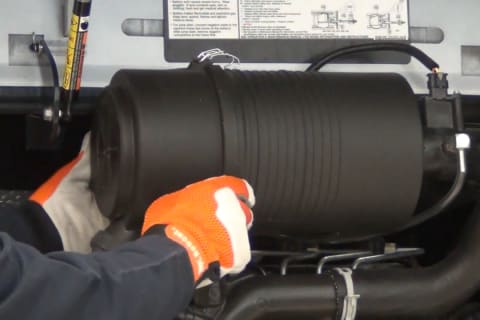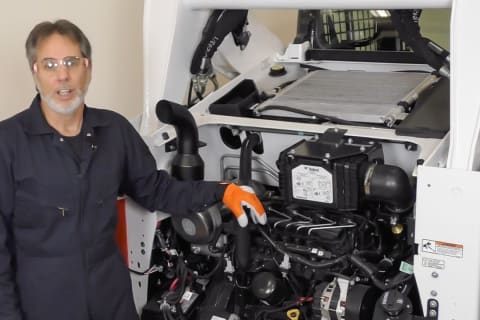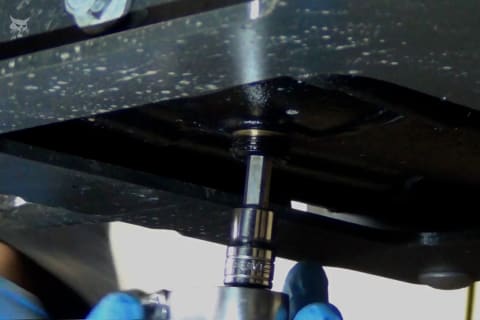VIDEO LENGTH: 13 minutes and 27 seconds (13:27)
ITEMS NEEDED
Replacing your Bobcat loader’s engine coolant is a relatively simple job, but it’s helpful to gather an assortment of tools and supplies, including:
- A bucket to drain the old coolant
- A pair of nitrile disposable gloves
- Mechanic gloves
- Safety glasses
- Paper towels or shop rags
- Antifreeze and coolant (you can buy Bobcat antifreeze and coolant online at https://shop.bobcat.com/fluid/antifre...)
- A 600 mm (24 in.) x 19 mm (3/4 in.) hose
- Funnel, locking pliers, sockets and other assorted tools
GETTING STARTED
With the loader parked on a level surface, open the rear door, raise the rear grill and use the prop rod for support. For the 80 platform loaders, you will simply need to raise the cooling package after removing the rear cover. Relieve cooling system pressure by removing the radiator cap. Reinstall the cap and access the lower coolant hose for drainage.
DRAINING OIL COOLANT
When working on a 60 or 70 platform R-Series loader, simply remove the belt shield to access the coolant hose, remove the hose clamp on the lower coolant hose, disconnect and quickly install your extra hose. Point the other end of the newly installed hose into a bucket for drainage. After removing the belt shield on an 80 platform R-Series loader, you may want to remove the air cleaner housing to create extra space to work. Then, disconnect the oil cooler coolant hose and quickly install your new hose to drain.
PREPARING FOR NEW FLUID
You can now replace all components installed, moved or removed during the drainage process. Be sure to dispose of your old engine oil coolant in a responsible manner.
REFILL WITH BOBCAT ANTIFREEZE AND COOLANT
You can now refill your loader with mixed Bobcat antifreeze and coolant. Bobcat offers both premixed and concentrated propylene glycol coolants, as well as premixed and concentrated ethylene glycol coolants. Never mix propylene glycol and ethylene glycol antifreeze and coolants. Use one or the other.
2-MINUTE LOW-IDLE STARTUP
Next, remove the radiator cap. Then, if working on a 60 or 70 platform loader, lower the rear grill and close the rear door. If working on an 80 platform loader, lower the cooling package and reinstall the radiator cover. Then, run the engine at low idle for two minutes. Fully activate the cab heater, if equipped.
COOLANT TOP-OFF AND RADIATOR CAP REPLACEMENT
Open the engine compartment and access the cooling package. Fill the radiator and check the coolant level in the fill tank. Add coolant to the fill tank as needed. Then, close the engine compartment.
RUNNING THE ENGINE TO OPERATING TEMPERATURE
Now it’s time to bring the engine to operating temperature. Start the engine and run until operating temperature is reached. Stop the engine.
COOLANT CHECK AND TOP-OFF
Open the engine compartment once again to access the cooling package. Fill the radiator and check the coolant level in the fill tank. Add coolant to the fill tank as needed. Then close the engine compartment. You’ve successfully replaced your engine coolant.
VIDEO CHAPTERS:
00:00 – Intro: Engine Coolant Replacement
00:15 – Replace Engine Coolant Every 1,500 Hours or 24 Months
00:19 – Items Needed
00:29 – Replacing Engine Coolant
00:35 – Draining Old Coolant: 60 & 70 Series
02:34 – Draining Old Coolant: 80 Series
05:47 – Preparing for New Fluid
06:03 – Removing and Restoring Hoses: 60 & 70 Series
06:50 – Removing and Restoring Hoses: 80 Series
09:38 – Refilling Engine Coolant
09:51 – Types of Bobcat Propylene Glycol Coolant
11:13 – Two-Minute Low Idle Startup
11:33 – Coolant Top-Off and Radiator Cap Replacement
12:54 – Running the Engine to Operating Temperature
13:11 – Coolant Check and Top-Off
02:27 – Outro: Learn More at Bobcat.com
